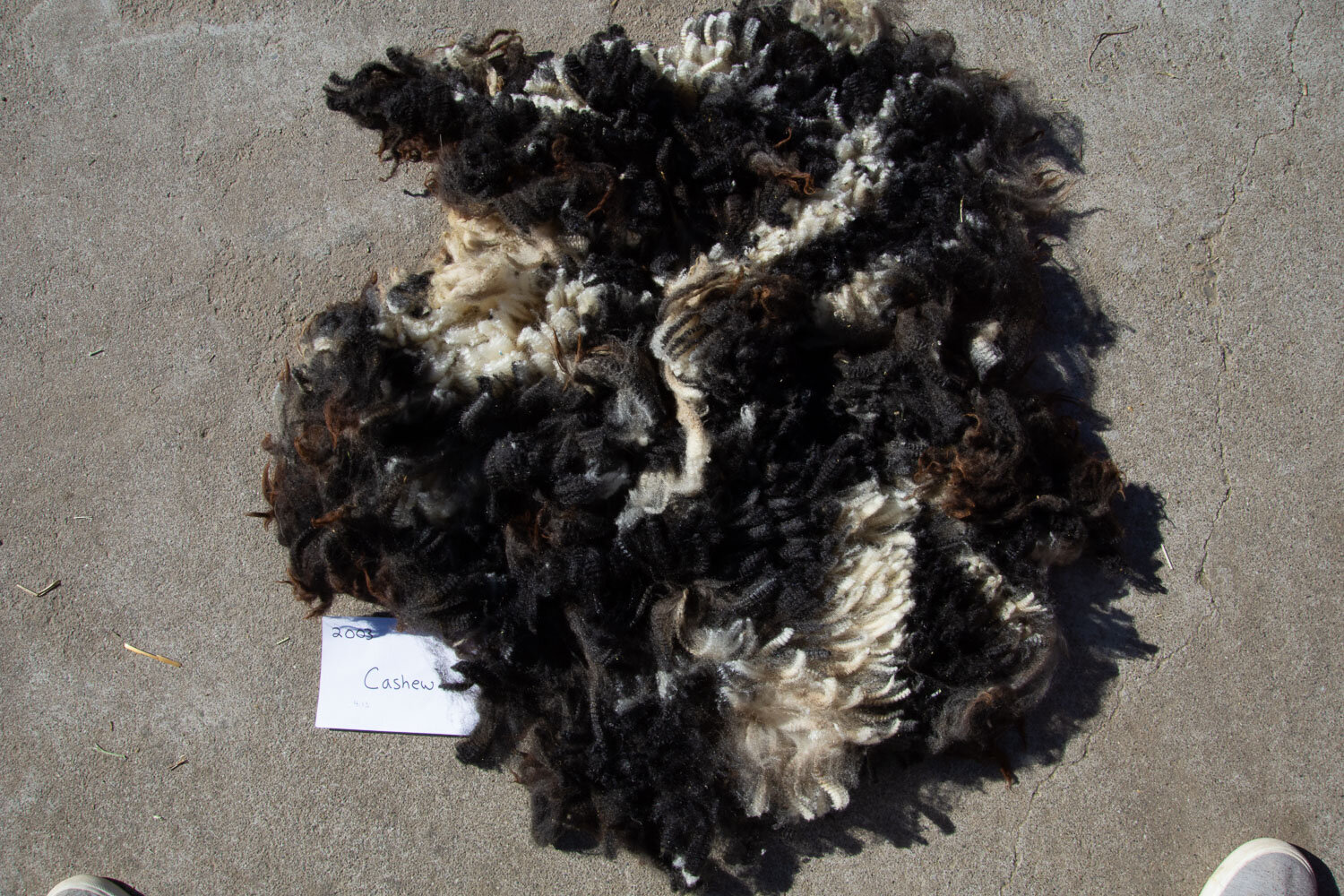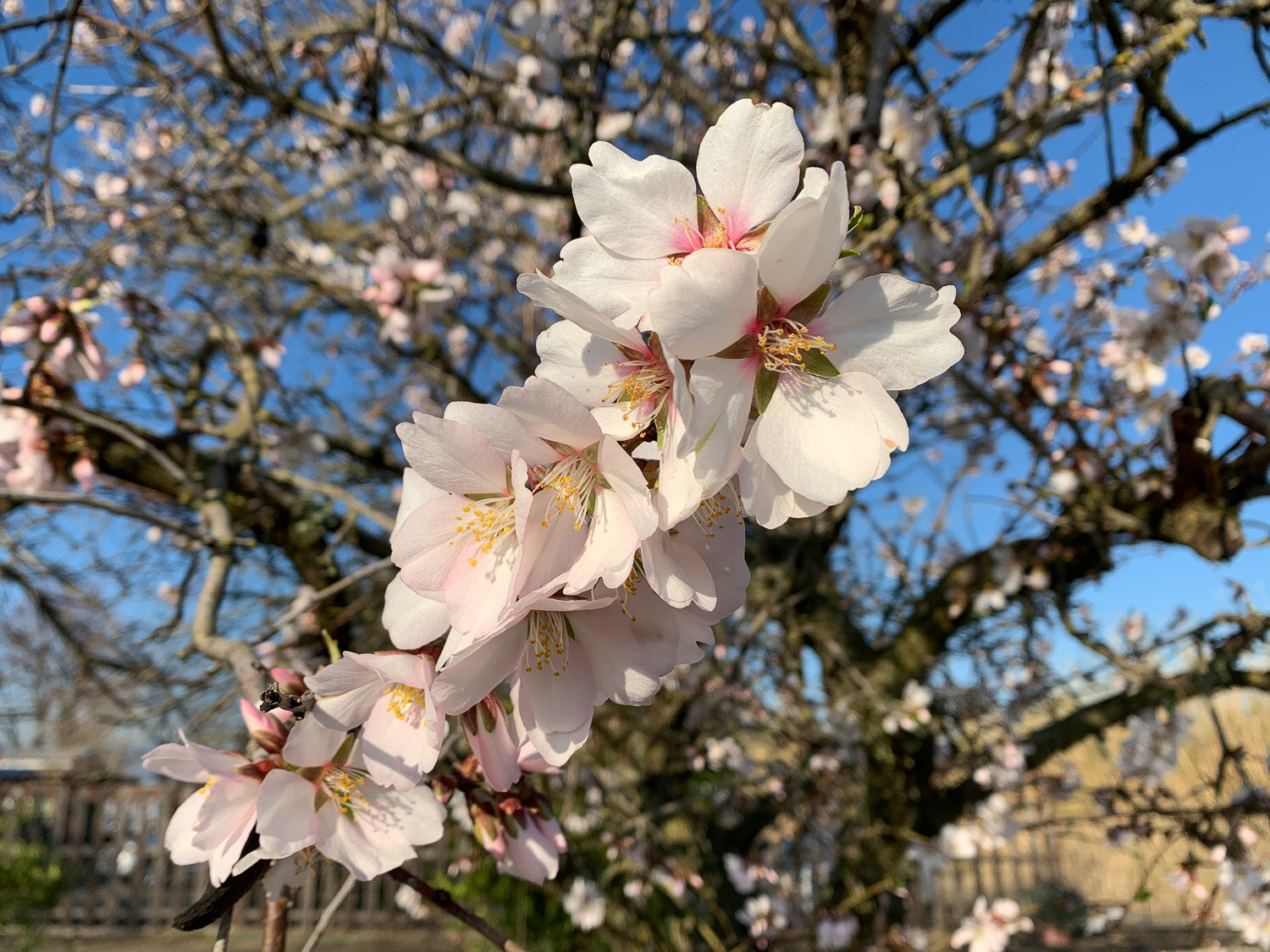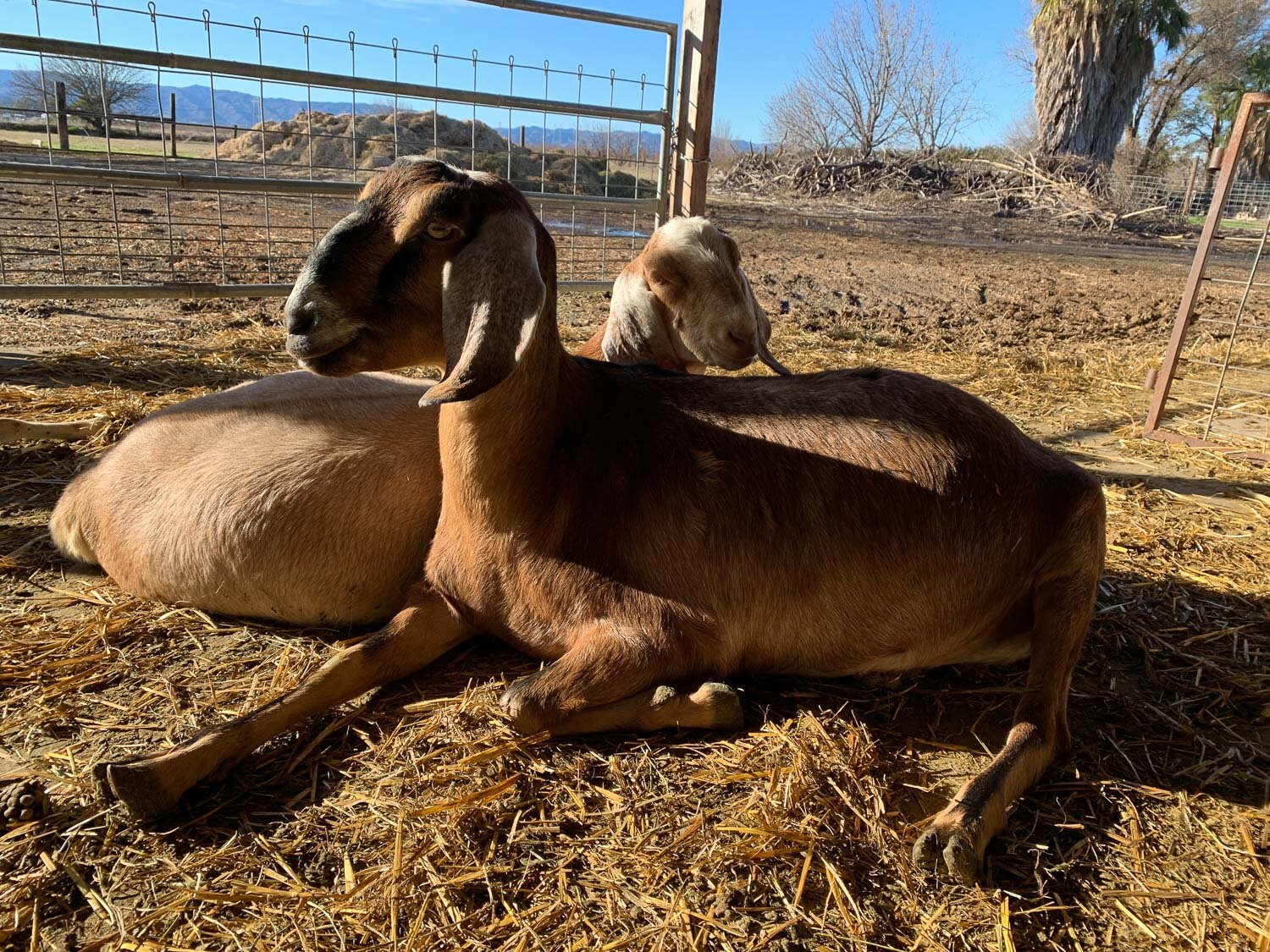Shearing at Timm Ranch - Part 2
/A second post about shearing at the Timm Ranch.
Read MoreJuly, 2023: I have switched to writing most of my blog posts on my original WordPress blog so access all the current news there and sign up on that site for email updates.
A second post about shearing at the Timm Ranch.
Read MoreEvery year I get wool from the Timm Ranch, about five miles from here, and have it made into a really great yarn. I sell the yarn in skeins and on cones and I use a lot of it for my own woven products. I could probably substitute blog posts from previous years for this one and you wouldn’t know the difference. Same place. Same sheep. However some of the Farm Club people have changed. So here is the 2022 Shearing Day last week.

The Timm Ranch sheep are what I like to call a ranch blend of Polypay, Rambouillet, and Targhee. That means that those are the original breeds in the flock but over the years, as the Timms have raised their own replacements, the individual breeds aren’t so recognizable. The sheep have traits of all, but most of what we are happy to see is the fine wool traits of those original breeds.

The sheep moved into the lane on the north side of the barn.

Last year there we tried to keep up with two shearers. This year there was only one and we were able to keep pace with him.

The shearer is known as Junior and this logo is a new one.

Several Farm Club members came to help evaluate and skirt fleeces.

We worked at two skirting tables.

The goal was to check the fleece for soundness (most were fine in that respect) and then skirt. Skirting is to remove the parts of the fleece that are of lesser quality—wool at the edge of the belly and that with excess VM (vegetable matter). The timing was just right for shearing and there was very little VM in the fleeces. All waste was bagged for a friend with a project in which she will make a product from wool that will otherwise be discarded. That will be a blog topic later on.

We kept a running tally of the weight so that I could make sure I reached my 200 pound minimum and I could figure out how much to pay for the wool. The skirted fleeces varied from 4.5 lb to 9.5 lb. and I ended up with 222 pounds in one pile and 50 pounds in the other.The wool will go to two different mills.

Some of the sheep after shearing.

The sheep were in two groups. The largest group had fall lambs, but there was one group with lambs born more recently—including the previous night (although that pair was still in a lambing pen). At one point Susan and I walked over to the group with young lambs and they followed her to the barn.

These are locks from some of the fleeces we chose. The yellow paper is 5” wide so you get an idea of the fleece length. There were a handful of extra long fleeces. One was from a sheep that was missed last year so that was a two year fleece—too long to combine with this batch. Some of the other long ones were from replacement ewes born in the fall of 2020 and not shorn last spring. We tried to sort by length and most of the 200+ pound batch is about 3 to 4 inches. The longer ones are mostly in the other batch of wool.
Stay tuned for another post with more photos.
This title leaves the focus of this blog post wide open, but the intent is to share some of the steps in getting the yarn ready to sell. Never mind the part about raising the sheep, shearing the sheep, sorting the fleece, shipping the fleece, scouring, carding, and spinning. I’m starting with the stage where I get the yarn back from the mill. I divided my 2021 Jacob fiber into two batches. The first batch went to the Valley Oak Wool & Fiber Mill in Woodland and the second to Mendocino Wool & Fiber in Ukiah. The Valley Oak yarn has been back for awhile and is on my website here.

This is the yarn I got a couple of weeks ago from Mendocino. When I skirt and sort fleeces I first separate the coarser britch wool from the rest of the fleece. This is fiber that grows on the back leg of the Jacob sheep and it needs to be removed to keep the bulk of the fleece feeling soft and not scratchy. (More about this later.) Then I sort for color. In this case you can see the white and the black and two grays. Gray is mostly a mix of white and black fiber that isn’t realistic to sort. The lighter gray happens to be the britch wool that I don’t sort for color—the black and white mix together in whatever proportion I sorted out. The darker gray on the left is the blend of white and black fibers from the main part of the fleece.
Also notice that there are cones and skeins for each color. This is the exact same yarn, just different “packaging”.

When I get the yarn back my first step is to measure the yarn. Using a yarn gauge (for sale here) allows me to compare this yarn to other yarns and to make a judgement about sett (ends per inch) for weaving or about needle size if I was planning to knit with it. The yarn on the cone measures 17 wpi.

However the yarn in the skeins measures 15 wpi. How can this be? It’s the SAME yarn. It makes sense when you see how tightly the cones are wound. The yarn in the skeins has had a chance to relax and bloom a bit.

What about this one at 12 wpi? It’s also the SAME yarn. The difference is that it has been soaked in water and then air dried. The yarn blooms even more. The significance of this is that the end user needs to know about the final state of the yarn. If the user makes a project (weave, knit, crochet) based on the measurement of the coned yarn the finished piece will likely be more dense than anticipated. The yarn will bloom when the project is washed. When customers buy yarn in a regular yarn store they expect that yarn to be in its final state and they don’t plan to wash the yarn before using it. I have to choose how to sell this yarn. In this case I soaked and then dried the yarn before re-skeining and labeling it. The customer can be confident that the yarn is ready to use.

The three colors of the yarn are very similar in size, but I went through this process anyway. The black yarn on the cone measured 17 wpi.

Skeined but not washed—15 wpi.

Washed—12 wpi.

This is the britch wool. You can see some of the hairier fibers. This yarn is great for rugs, bags, table runners and placemats, and even blankets. It’s just not as good as the other yarn for next to the skin wear. This one measure 15 wpi for the coned yarn.

The washed britch wool measures 13 wpi.

This and the one below are the final product photos for the website.

You can find this yarn on the website or in person at the shop (hours are here).
I should share some projects from this yarn, but that will have to be the topic of another post.
This is a post with no theme other than the snippets (is that a word?) of all the stuff I’ve been doing.

I got my second batch of the 2020 Jacob fiber back as yarn. The first batch of 2020 wool was spun at Valley Oak Mill and is listed here. This batch is from Mendocino Wool Mill and is listed here. It always take me a little while to figure out how to best present it for sale. I had some put on cones and some in skeins. The yarn on the cones appears to be so much finer than the skeined yarn but it’s the same yarn—it is just under more tension when wound on a cone. I wondered how much the skeined yarn would bloom when washed. That information is important to know when you are planning a project. Whether you are going to knit, crochet, or weave with the yarn you need to know what will happen to the piece when it is washed.

I washed a white and a black skein to see what would happen. In this case washing just means soaking in hot water and then hanging to dry. This is four skeins of yarn. Can you tell the difference in the yarns on the outside and in the middle? The middle ones have not had any treatment. The outside skeins have been washed and the character is very different.


One way to measure the change is by looking at wraps per inch (wpi) before and after. In this case the black yarn measured 14 wpi before washing and 10 wpi after. If you don’t allow for this post-washing change then you may be surprised at how the finished piece looks and behaves. I will wash all the skeins before labeling them.

Another test before selling the yarn is how it actually works in use. I wove scarves of each batch of yarn to compare them and to determine the best sett (spacing of the yarns on the loom). I tried each at 8 epi (ends per inch) and 10 epi.

I photographed these so that the light was behind and you can kind of see the spaces between the yarns. Those spaces are nothing like when the scarves were still on the loom with the yarn under tension. When you cut the piece off the loom the yarns relax and they further relax and “bloom” when fulled in hot water. This photo shows 2 scarves from each batch of yarn at 2 setts each. All four turned out great and even though the yarns appear different, it’s hard to tell the difference in these finished pieces. I look forward to using these yarns in some much larger projects next.
By the way I put these scarves on three different websites—here on my own, on the Fibershed Marketplace and the Artery webstore, all the while carefully keeping track of which one is where so I don’t take a chance on double-selling them.

Another project I’m working on is recording some videos for the Learn to Weave class using the rigid heddle loom. I am going to teach this on Zoom next week and I want videos for students to refer to when we’re not on Zoom. I warped the rigid heddle loom with all four of those new Jacob colors and wove a short scarf while recording most of it. I haven’t wet finished the scarf yet, or edited the videos. (Thanks for reminding me.)


I also finished another v-shawl. This is another thing on my list of things to do. I want to put together a kit for this shawl and give options for the stripe design. I’ve woven several. I just need to get the instructions put together and figure out the best way to present it. I just added this shawl to the Artery web store along with one of the pinwheel scarves.


I still have a barn full of fleeces. I spent some time yesterday working on those. I only have two full fleeces listed on the website so far, but I have listed several 1-pound batches for people who would like to start with raw wool but not start out with a whole fleece. I am skirting, sorting, and photographing. Raw wool is listed here.


Here is another example. In the meantime I want to get my hands in this and start working with it myself. There are some really gorgeous fleeces here.

I said this was a bunch of random photos. So far it is all about wool and weaving and the things I need to do. So let’s get random. Dan saw me weaving and my weaving slippers reminded him of the Bernie mittens that have been popping up all over the internet.

How about springtime flowers? It’s not spring yet, but the daffodils are here.

So are the almond flowers.


I don’t usually have the patience to scour the wool in locks even though it would save a lot of time at the other end of processing. I pulled out some locks that had more VM (vegetable matter) than I would like. I’m going to see how clean I can get them with flicking after washing. That will go much faster if they are already organized.


How about some goats? These are mothers with last year’s daughters. That’s Ellie and her daughter on the left and Amelia with hers on the right. Amelia is pregnant again.

One last random photo. The redbud is going to bloom soon. Hope springs eternal! And we’re getting our Covid vaccines Monday—have to drive an hour for it but I finally tracked it down.
Weaving blankets from dozens of natural colored locally produced wool yarns.
Read MoreAt Meridian Jacobs farm we raise Jacob sheep and sell locally grown wool fiber, yarn, and handwoven goods. We teach fiber classes and sell Ashford, Clemes & Clemes, and Schacht spinning and weaving equipment. We encourage farm visits with field trips and our unique Farm Club.
Search blog posts since 2019. If the search says it can’t find a post try putting in your search word a second time. I don’t know why but the second time it seems to work.
Search the entire website, including older blog posts.